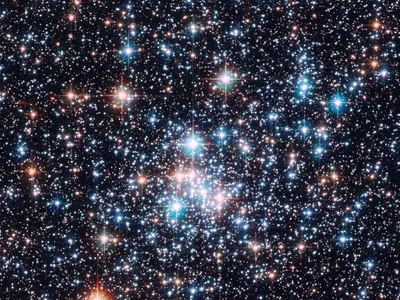This year, many space abnormalities have been occurring, from a rare comet occurrence to the sudden appearance of the Northern Lights, these events have caused a major upscale in the unusual events department, specifically in solar activity. These occurrences range from small, minor events to activity we haven’t seen in decades. This year has been home to many great phenomenons, so let’s look at some of those grand events!
Abnormal Aurora Borealis Sightings
On October 10th of this year, some Colorado residents could see the Northern Lights phenomenon from their own neighborhoods, either by eye or cell phone. Many other abnormal sightings have been noted this year, and not just in Colorado. Many northern states like Wyoming and Idaho, and even some other southern states like Arizona, have been able to spot the Northern Lights.

The cause is a much bigger event, a major solar storm. Earlier this year in May, NASA scientists identified multiple solar flares and CMEs heading towards Earth through May 7th – 11th. This was an abnormal sight and the first time they’ve seen anything like it in decades. Many other instances of major solar activity continued afterward and were detected, showing the first signs of a major solar storm, which is a release of energy, particles, magnetic fields, and other material that is blasted into the solar system by the Sun. This solar system was rated G5, the strongest on the scale, and one of the most powerful solar storms we’ve seen, being comparable to both the 1958 and 2003 major solar storms. Due to this, a major geomagnetic storm was released onto Earth, causing a solar maximum to be reached, and allowing the aurora borealis to reach more southern parts of the Earth, including the U.S., southern parts of Canada, and some southern parts of Europe and Asia.
A Rare Comet Occurrence

For the past couple of months, we’ve seen many sightings of grand events, like the aurora borealis or eclipses. Many of these things are amazing, but what about something that won’t be visible for long? We’ve seen something else in October, something much more rare. A shining streak in the sky, but not just any shining streak, this light across the sky was a rare comet, and was spotted throughout the U.S. on October 12th, and continued to appear until October 21st, dazzling the night sky for the next couple of days. Many gathered to watch, in the hopes they could catch a glimpse of this rare comet. The comet was named Tsuchinshan-ATLAS and won’t be visible for another 80,000 years, so it was truly a once-in-a-lifetime spectacle.
Intense Solar Flares

(BCC Sky at Night Magazine)
Image Courtesy of BCC Sky at Night Magazine; strong solar flares on May 27th and May 29th compared to Earth. Earlier this year in May, the solar storm released an intense barrage of solar flares along with everything else. Since then, NASA has sighted and recorded multiple other extreme solar flares, including many in October. These are expected to continue until the solar maximum has ended and are some of the strongest we’ve seen in decades. Having one of these get close to Earth, with other solar storm factors, could interfere severely with satellites, causing them to fall, could interfere with electronics and cell phones, could cause widespread blackouts, and could be severely dangerous to living beings.
Conclusion
In all, this year has been a grand performance of everything solar. We’ve seen lights, we’ve seen eclipses, and we’ll continue to see more throughout the year. Most of these events will stay until the solar maximum has reached its end, so sit back, grab some popcorn, and enjoy the grand and marvelous built-in spectacle in the sky.







![Zordan, E. (2025). Gillian Murphy. [Photograph] The New York Times.](https://chswarriorscroll.com/wp-content/uploads/2025/10/unnamed-1200x1200.png)



